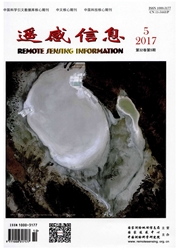

 中文摘要:
中文摘要:
鉴于传统的旅游要素集聚与结构性优化研究难以真正反映对象空间差异的变化,提出了一种基于可达性分析的旅游吸引物聚集特征分析方法。此方法先是从人类活动与自然禀赋双重作用的视角建立了一套旅游吸引物指标分类体系,然后根据时空可达性原理,经GIS工具的成本加权距离计算,建立其空间集聚的单项特征与整体特征评价,并在此基础上提出区域性优化策略。实证研究结果表明,这种方法不但可以较好地刻画旅游吸引物本身的集聚特征与地域差异,也为合理配置其他旅游要素提供了可靠的依据。
 英文摘要:
英文摘要:
The spatial aggregation characteristics of tourism attractions determine the formation of tourist space pattern on the regional level.The system of evaluation indicators for tourism attractions was established in this article.Thus,the method for the evaluation of the aggregation characteristics was constructed based on the principle of spatial and temporal accessibility,and Jiangsu Province was taken as the object of empirical analysis.The results of empirical analysis showed that:1)In terms of general characteristics,the tourism attractions in Jiangsu Province showed obvious spatial aggregation characteristics.About80% of the tourism attractions are distributed intensively in 45% of the area.2)In terms of the characteristics of each tourism attraction,the spatial aggregation of tourism attractions depends on transportation conditions,with high degree of dependence among the tourism attractions.3)Although the tourism attractions in Jiangsu Province present the feature of network aggregation,there still exists the"fault layer"of index.Based on the above conclusions,we proposed that the new nodes of aggregation of tourism attractions should be fostered in several areas,so as to promote the intactness of the regional network of tourism attractions.
 同期刊论文项目
同期刊论文项目
 同项目期刊论文
同项目期刊论文
 期刊信息
期刊信息
